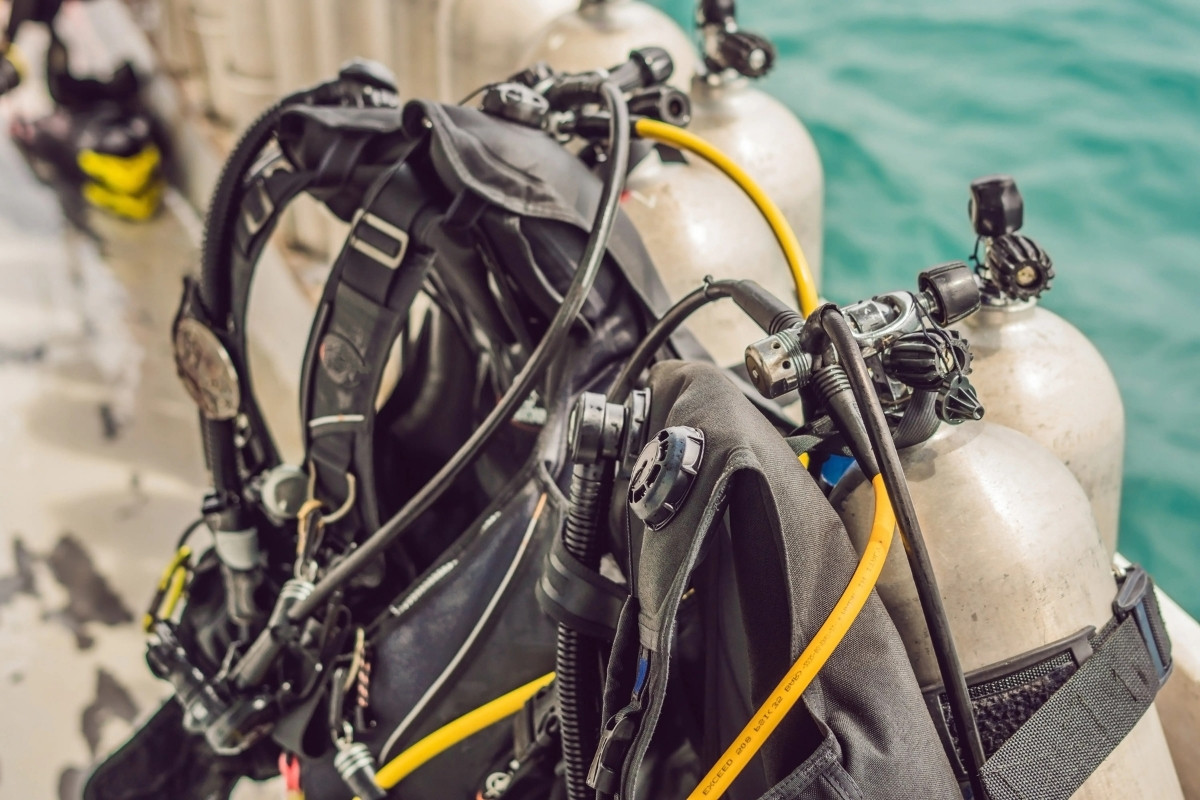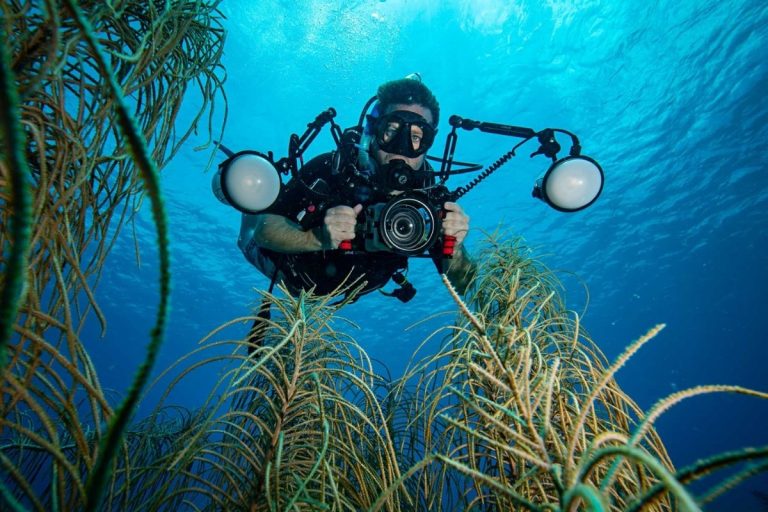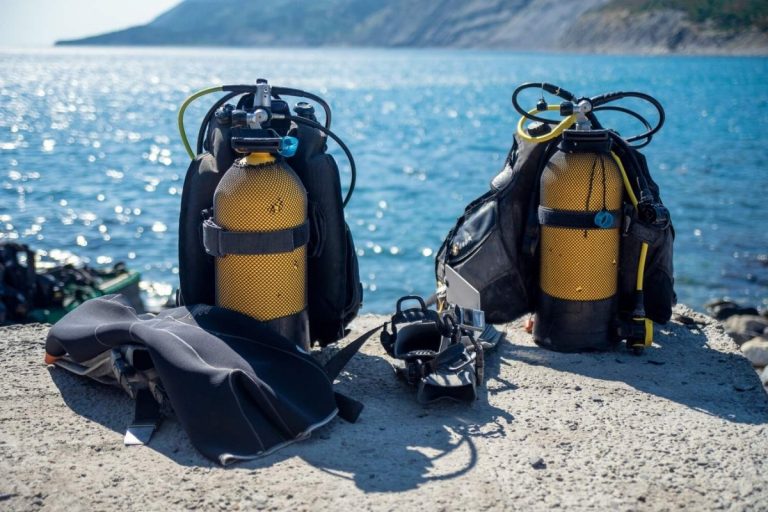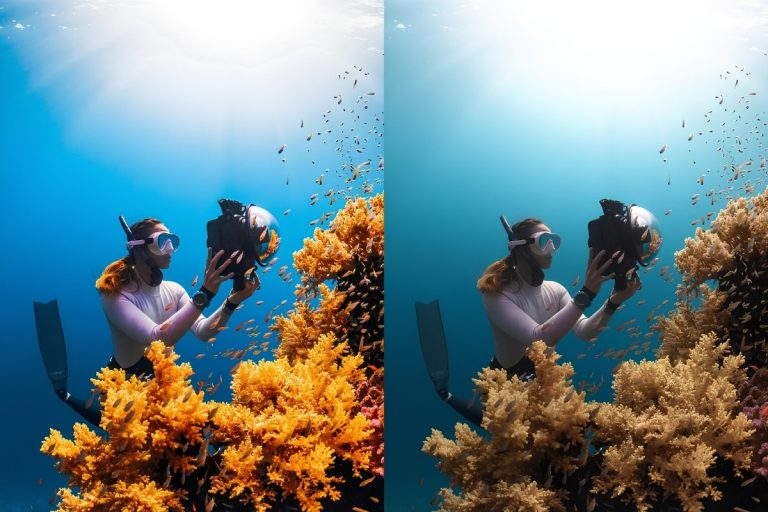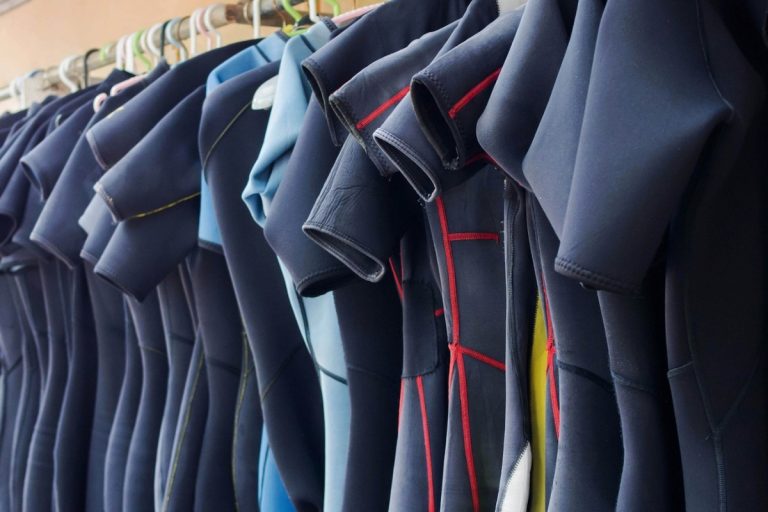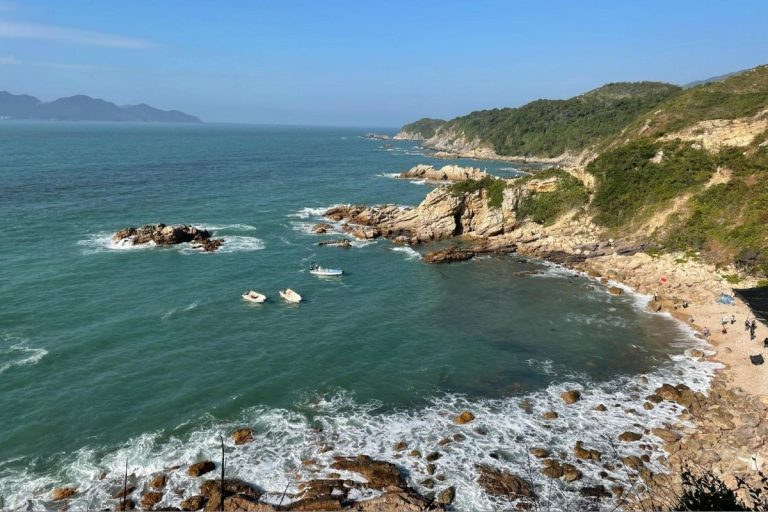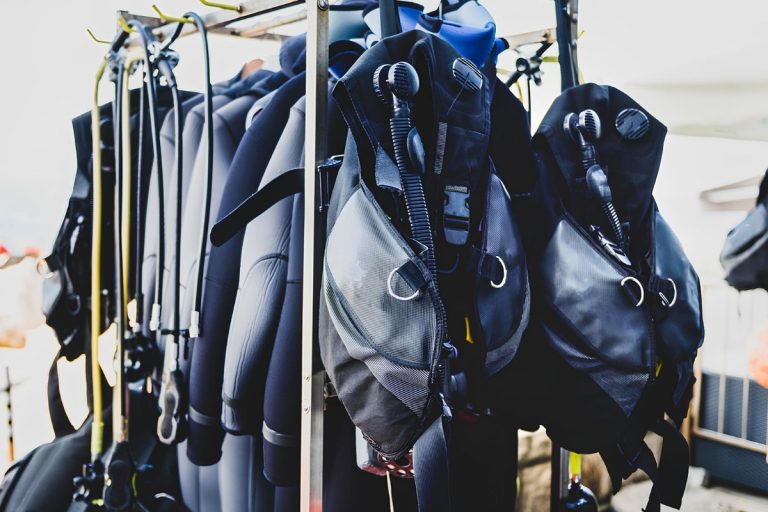When you’re ready to invest in your own buoyancy control equipment, the choice between a traditional jacket-style BCD and a backplate and wing system can feel overwhelming. Both options have passionate advocates, and for good reason. Each system offers distinct advantages that can dramatically impact your underwater experience, comfort, and diving performance.
The decision ultimately comes down to your diving style, experience level, and personal preferences. While jacket-style BCDs have dominated the recreational diving world for decades, backplate and wing systems are gaining popularity among divers who prioritize customization and precise buoyancy control.
- Understanding BCD Types
- Advantages of Jacket-style BCDs
- Benefits of Backplate and Wing Systems
- Choosing the Right Backplate
- Fitting and Adjusting BPW Systems
- Performance in Diving Conditions
- Cost Considerations
- Personal Experiences and Recommendations
- Finding Your Perfect Buoyancy Solution
- Frequently Asked Questions
- Finding Your Ideal Buoyancy Control System
Understanding BCD Types
The world of buoyancy control devices offers several distinct approaches to managing your underwater positioning and comfort. Understanding the fundamental differences between these types of buoyancy control devices will help you make an informed decision that aligns with your diving goals and preferences.
Traditional jacket-style BCDs wrap around your torso like a vest, providing buoyancy through air chambers that surround your body. This design has been the standard for recreational diving since the 1970s and remains the most familiar option for new divers. The integrated approach combines buoyancy control, weight systems, and storage in a single package.
Backplate and wing systems take a modular approach, separating the structural support (backplate) from the buoyancy element (wing). This configuration places all buoyancy behind the diver, creating a different feel and trim profile in the water. The system’s modularity allows for extensive customization and adaptation to different diving conditions.
Jacket-style BCDs
Jacket-style BCDs feature integrated air chambers that wrap around your sides and sometimes across your chest. When inflated, these chambers provide buoyancy while maintaining a familiar feel similar to wearing a life jacket. Most models include multiple pockets for accessories, integrated weight systems, and attachment points for additional gear.
The wraparound design offers inherent stability at the surface, making it easier to maintain an upright position during surface intervals. This characteristic makes jacket BCDs particularly appealing to newer divers who may feel more secure with this familiar buoyancy distribution.
Backplate and Wing (BPW) Systems
Backplate and wing systems consist of three main components: a rigid backplate (usually aluminum or stainless steel), a harness system made of webbing, and a wing-shaped bladder that provides buoyancy. The backplate serves as the foundation, distributing weight and providing attachment points for your tank and other equipment.
The wing design keeps all buoyancy behind you, which can improve your horizontal trim and reduce drag while swimming. This rear-mounted buoyancy feels different from jacket-style systems but often provides more precise control once you adapt to the configuration.
Comparison of Features
Jacket BCDs excel in surface stability and ease of use, making them ideal for casual recreational diving and situations where you need to don and doff equipment quickly. They typically offer more built-in storage and are readily available in rental fleets worldwide.
Backplate and wing systems shine in customization and underwater performance. The modular design allows you to adjust every aspect of the fit and configuration, potentially leading to better trim and more efficient swimming. The simplified design also tends to be more durable and easier to maintain.
Experience Level Considerations
New divers often find jacket BCDs more intuitive and comfortable during their initial certification process. The familiar feel and surface stability can boost confidence while learning fundamental skills. Most dive training programs use jacket-style BCDs, making the transition to personal equipment seamless.
Experienced divers frequently gravitate toward backplate and wing systems as they develop more refined buoyancy control skills and seek equipment that can adapt to various diving environments. The learning curve exists, but many divers find the improved performance worth the initial adjustment period.
Advantages of Jacket-style BCDs
Jacket-style BCDs offer several compelling advantages that have made them the standard choice for recreational diving operations worldwide. Their user-friendly design and practical features address many common diving scenarios effectively.
The integrated approach of jacket BCDs simplifies the diving experience by combining multiple functions in a single piece of equipment. Weight integration, buoyancy control, and storage all work together seamlessly, reducing the complexity of gear management both above and below water.
Stability and Storage
Surface stability represents one of the most significant advantages of jacket-style BCDs. The wraparound buoyancy chambers help maintain an upright position during surface intervals, making it easier to rest, communicate with dive buddies, or handle equipment changes between dives.
Storage capacity in jacket BCDs typically exceeds what you’ll find in most backplate and wing configurations. Multiple pockets, D-rings, and attachment points provide convenient access to essential accessories like dive computers, signaling devices, and underwater cameras without requiring additional accessories.
Comfort in Warm Climates
Warm water diving conditions often favor jacket-style BCDs due to their design characteristics. The distributed buoyancy feels natural when wearing minimal thermal protection, and the integrated weight systems eliminate the need for separate weight belts that can be uncomfortable in thin wetsuits.
The ability to quickly adjust and remove jacket BCDs makes them practical for boat diving operations where efficient turnaround times between dives are important. This convenience factor becomes particularly valuable during multi-dive days in tropical destinations.
Common Use in Rental Fleets
Dive operators worldwide predominantly stock jacket-style BCDs in their rental fleets, making them the most accessible option for traveling divers. This ubiquity means you can expect familiarity with the controls and features regardless of your diving destination.
The standardized design of most jacket BCDs also means that skills and muscle memory transfer easily between different brands and models. This consistency can be valuable when diving with unfamiliar equipment or in situations where you need to assist other divers.
Benefits of Backplate and Wing Systems
The advantages of backplate and wing systems become apparent once divers experience their modular design and performance characteristics. These systems offer a level of customization and control that can transform your underwater experience.
Modular construction allows divers to optimize their equipment configuration for specific diving conditions and personal preferences. Unlike jacket BCDs, which come as complete packages, backplate and wing systems can be tailored precisely to your body dimensions and diving requirements.
Modular and Customizable Design
The three-component design of backplate and wing systems provides unprecedented flexibility in equipment configuration. You can select different backplate materials, wing sizes, and harness configurations to create a system that matches your exact needs and preferences.
This modularity extends to maintenance and upgrades as well. Individual components can be replaced or upgraded without purchasing an entirely new system, potentially providing better long-term value and allowing your equipment to evolve with your diving skills and interests.
Improved Buoyancy Control
Rear-mounted buoyancy in wing systems often provides more precise control over your position in the water column. The streamlined design reduces drag and can help achieve better horizontal trim, leading to more efficient swimming and reduced air consumption.
The wing design also tends to provide more consistent buoyancy characteristics as you change depth, since the air volume changes more predictably in the single rear chamber compared to the multiple chambers in jacket-style systems.
Weight Distribution and Trim
Backplate systems excel at weight distribution, allowing you to position ballast precisely where it provides the best trim. The rigid backplate can incorporate weight directly into its structure, while additional weights can be positioned strategically along the harness system.
This precise weight placement often results in better horizontal trim with less effort, reducing the total amount of weight needed and improving your overall comfort and swimming efficiency underwater.
Durability and Adaptability
The simple construction of backplate and wing systems typically results in greater durability compared to jacket BCDs. Fewer moving parts and integrated components mean fewer potential failure points and easier field repairs when problems do occur.
The adaptability of these systems also makes them suitable for various diving environments, from warm water recreational diving to technical diving applications. A single system can be reconfigured for different conditions rather than requiring multiple specialized pieces of equipment.
Choosing the Right Backplate
Selecting the appropriate backplate forms the foundation of your entire system and significantly impacts both performance and comfort. The material choice affects weight distribution, durability, and travel considerations.
Understanding the characteristics of different backplate materials helps you make an informed decision based on your diving patterns and preferences. Each material offers distinct advantages that may align better with specific diving styles or logistical requirements.
Materials: Aluminum vs. Stainless Steel vs. Titanium
Aluminum backplates typically weigh between 1.75 and 2 pounds, making them excellent choices for travel diving where weight restrictions matter. Their lighter weight also makes them suitable for divers who need less ballast or prefer more buoyant configurations.
Stainless steel backplates weigh approximately 5.75 to 6 pounds, providing substantial negative buoyancy that can reduce the need for additional weights. The extra weight helps achieve proper trim more easily, particularly when diving in thick wetsuits or dry suits that add significant buoyancy.
Titanium backplates offer the best of both worlds with excellent corrosion resistance and moderate weight, though they remain less common and more expensive than aluminum or stainless steel options.
Weight Considerations for Travel
Travel diving often favors lighter aluminum backplates due to airline weight restrictions and the convenience of reduced luggage weight. The weight savings can be significant when combined with other gear choices optimized for travel.
However, some divers find that the weight savings from aluminum backplates require carrying additional ballast, potentially negating the travel advantage. Consider your typical diving conditions and thermal protection when evaluating this trade-off.
Customizable Weight Placement
The rigid structure of backplates allows for strategic weight placement that can dramatically improve your trim and comfort underwater. Weight can be integrated directly into the backplate design or added through trim weight systems positioned along the harness.
This customization capability often allows divers to achieve proper trim with less total weight than traditional weight belt systems, improving comfort and reducing the effort required to maintain proper positioning underwater.
Fitting and Adjusting BPW Systems
Proper fitting of backplate and wing systems requires patience and attention to detail, but the results can significantly enhance your diving comfort and performance. Unlike jacket BCDs with predetermined sizing, BPW systems require individual customization.
The adjustment process involves multiple variables including harness length, crotch strap positioning, and weight distribution. Getting these elements right takes time but creates a truly personalized fit that can improve your underwater experience dramatically.
Importance of Proper Adjustment
A properly adjusted backplate and wing system should feel like a natural extension of your body underwater. The harness should distribute weight evenly without creating pressure points, while maintaining enough adjustability to accommodate different thermal protection thicknesses.
Poor adjustment can lead to discomfort, reduced mobility, and compromised safety. Taking time to achieve proper fit pays dividends in comfort and performance throughout your diving career.
Trial and Error in Fitting
Expect the fitting process to require multiple adjustment sessions and pool testing before achieving optimal results. Each change to harness length or weight placement can affect other aspects of the fit, requiring a systematic approach to refinement.
Many divers find it helpful to make small adjustments between dives rather than attempting major changes all at once. This gradual approach allows you to evaluate each modification’s impact on comfort and performance.
Consulting Local Dive Shops
Working with experienced dive professionals can accelerate the fitting process and help avoid common mistakes. Local dive shops often have extensive experience with backplate and wing systems and can provide valuable guidance during initial setup.
Professional fitting services may seem like an additional expense, but they can save significant time and frustration while ensuring your system is configured safely and effectively from the start.
Performance in Diving Conditions
Real-world diving conditions test equipment performance in ways that pool sessions cannot replicate. Understanding how different BCD types perform in various scenarios helps inform your equipment choice.
Ocean conditions, varying thermal protection, and different diving activities all impact how your buoyancy control system performs. Consider your typical diving environment and activities when evaluating different options.
Buoyancy Challenges with Additional Gear
Carrying additional equipment like cameras, lights, or safety gear affects your buoyancy and trim regardless of your BCD choice. However, different systems handle these changes in distinct ways that may favor one design over another.
Backplate and wing systems often adapt better to varying equipment loads due to their customizable weight distribution and streamlined design. The modular nature allows for easy reconfiguration when adding or removing gear.
Testing in Controlled Environments
Pool sessions provide valuable opportunities to test equipment adjustments and become familiar with new systems before venturing into open water. This controlled environment allows you to focus on equipment familiarization without environmental distractions.
Progressive testing from pool to shallow open water to your typical diving conditions helps build confidence and identify any remaining adjustment needs before committing to the system for regular use.
Feedback from Experienced Divers
Learning from other divers’ experiences can provide valuable insights into long-term performance and satisfaction with different systems. However, remember that individual preferences and diving styles vary significantly, so personal testing remains essential.
Online forums, local dive clubs, and equipment demonstrations at dive shows offer opportunities to gather diverse perspectives on equipment performance and suitability for different diving applications.
Cost Considerations
The financial investment in buoyancy control equipment varies significantly based on system type, features, and quality level. Understanding the total cost of ownership helps make informed decisions that balance budget constraints with performance requirements.
Initial purchase price represents only part of the equation. Maintenance costs, upgrade potential, and longevity all factor into the long-term value proposition of different systems.
Price Comparison of BCDs and BPW Systems
Entry-level jacket BCDs and basic backplate and wing systems often fall within similar price ranges, making cost less of a deciding factor than features and performance characteristics. However, high-end options in both categories can vary significantly in price.
Backplate and wing systems may require additional accessories like harnesses and weight systems that aren’t included in basic packages, potentially increasing the total initial investment compared to complete jacket BCD packages.
Long-term Investment in Gear
The modular nature of backplate and wing systems can provide better long-term value through component upgrades and replacements rather than complete system replacement. This flexibility may justify higher initial costs for divers who plan extensive equipment use.
Durability differences between systems also affect long-term costs. Simple, robust designs typically require less maintenance and replacement over time, though individual usage patterns and care practices significantly impact equipment longevity.
Personal Experiences and Recommendations
Individual experiences with different buoyancy control systems provide valuable insights into real-world performance and satisfaction. These personal perspectives complement technical specifications and help inform equipment decisions.
Diving with various systems allows you to develop preferences based on actual performance rather than theoretical advantages. Many experienced divers have used both jacket BCDs and backplate and wing systems, providing comparative insights.
Diving with Different Systems
Transitioning between different buoyancy control systems reveals distinct characteristics and performance differences that may not be apparent when using only one type. These comparative experiences often clarify personal preferences and priorities.
Some divers find that their preferences change as their skills develop and diving interests evolve. What works well for basic recreational diving may not suit more advanced applications or different environmental conditions.
Customization Experiences
The extensive customization options in backplate and wing systems can be both a blessing and a challenge. While the ability to tailor every aspect of the fit and configuration appeals to many divers, others prefer the simplicity of predetermined sizing and features.
Successful customization often requires patience and willingness to experiment with different configurations. The learning process can be rewarding for divers who enjoy optimizing their equipment, but may frustrate those who prefer straightforward solutions.
Recommendations for New Divers
New divers often benefit from starting with familiar jacket-style BCDs during their initial training and certification process. The intuitive operation and surface stability can boost confidence while learning fundamental diving skills.
However, divers who plan extensive diving activities or have specific performance goals might consider backplate and wing systems earlier in their diving careers. The initial learning curve may be worthwhile for the long-term benefits these systems can provide.
Finding Your Perfect Buoyancy Solution
Your choice between a jacket-style BCD and backplate and wing system should reflect your diving goals, experience level, and personal preferences rather than following popular trends or recommendations. Both systems have proven their effectiveness in countless diving situations worldwide.
Consider your typical diving conditions, travel requirements, and long-term diving aspirations when making this decision. The best buoyancy control system is the one that enhances your underwater experience while providing reliable performance and comfort in the conditions you dive most frequently.
Remember that equipment choices can evolve as your diving skills and interests develop. Starting with one system doesn’t prevent you from exploring alternatives as you gain experience and refine your preferences. The most important factor is choosing equipment that allows you to dive safely and enjoyably while supporting your continued growth as a diver.
Frequently Asked Questions
What is the main difference between a jacket-style BCD and a backplate and wing system?
Jacket-style BCDs wrap around the torso and provide buoyancy through integrated air chambers, while backplate and wing systems separate the structural support from the buoyancy element, allowing for customization and improved trim.
Which system is better for new divers?
New divers often find jacket-style BCDs more intuitive and comfortable due to their familiar design and surface stability.
Can backplate and wing systems be customized?
Yes, backplate and wing systems offer extensive customization options for fit, buoyancy, and equipment configuration that can be tailored to individual preferences.
What are the advantages of jacket-style BCDs?
Jacket-style BCDs provide stability, ease of use, and ample storage space, making them ideal for casual recreational diving.
What should I consider when choosing a backplate?
Consider the backplate material, weight distribution, and how well it meets your diving patterns and preferences.
Finding Your Ideal Buoyancy Control System
Ultimately, the decision between a jacket-style BCD and a backplate and wing system should be informed by your unique diving goals, experience level, and comfort preferences. Each option has its strengths, and as your skills evolve, your choice of equipment can adapt to enhance your diving experience.
